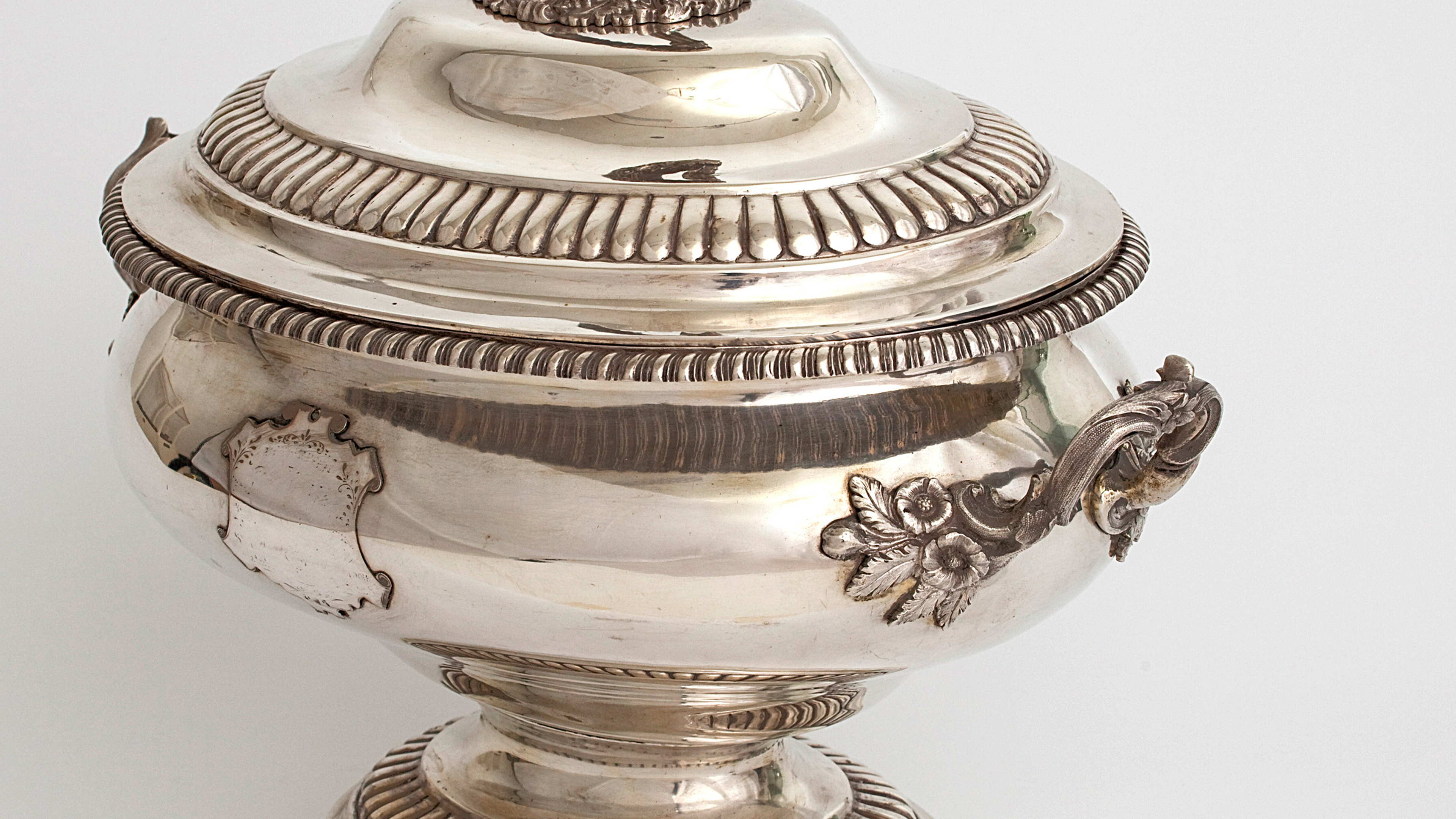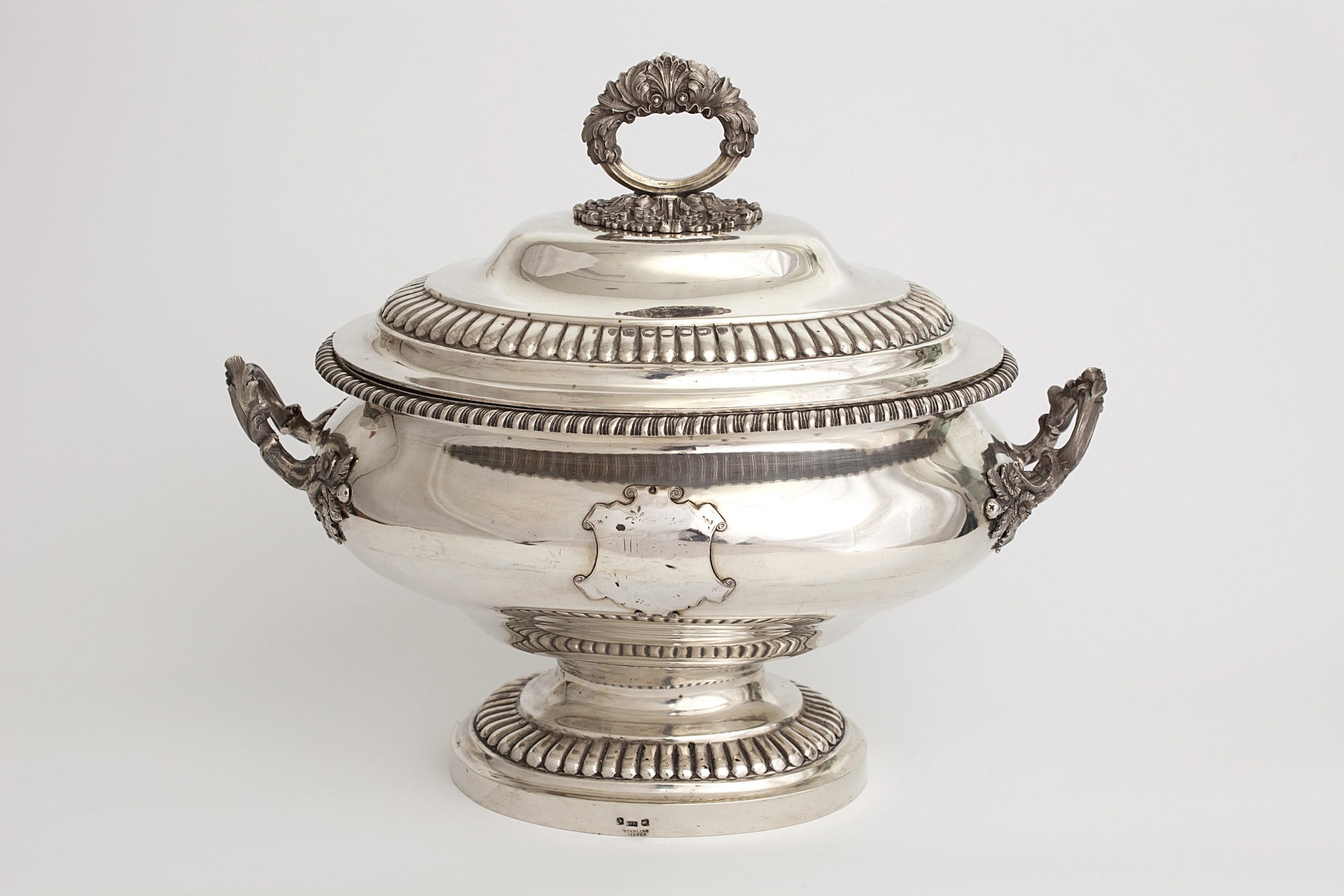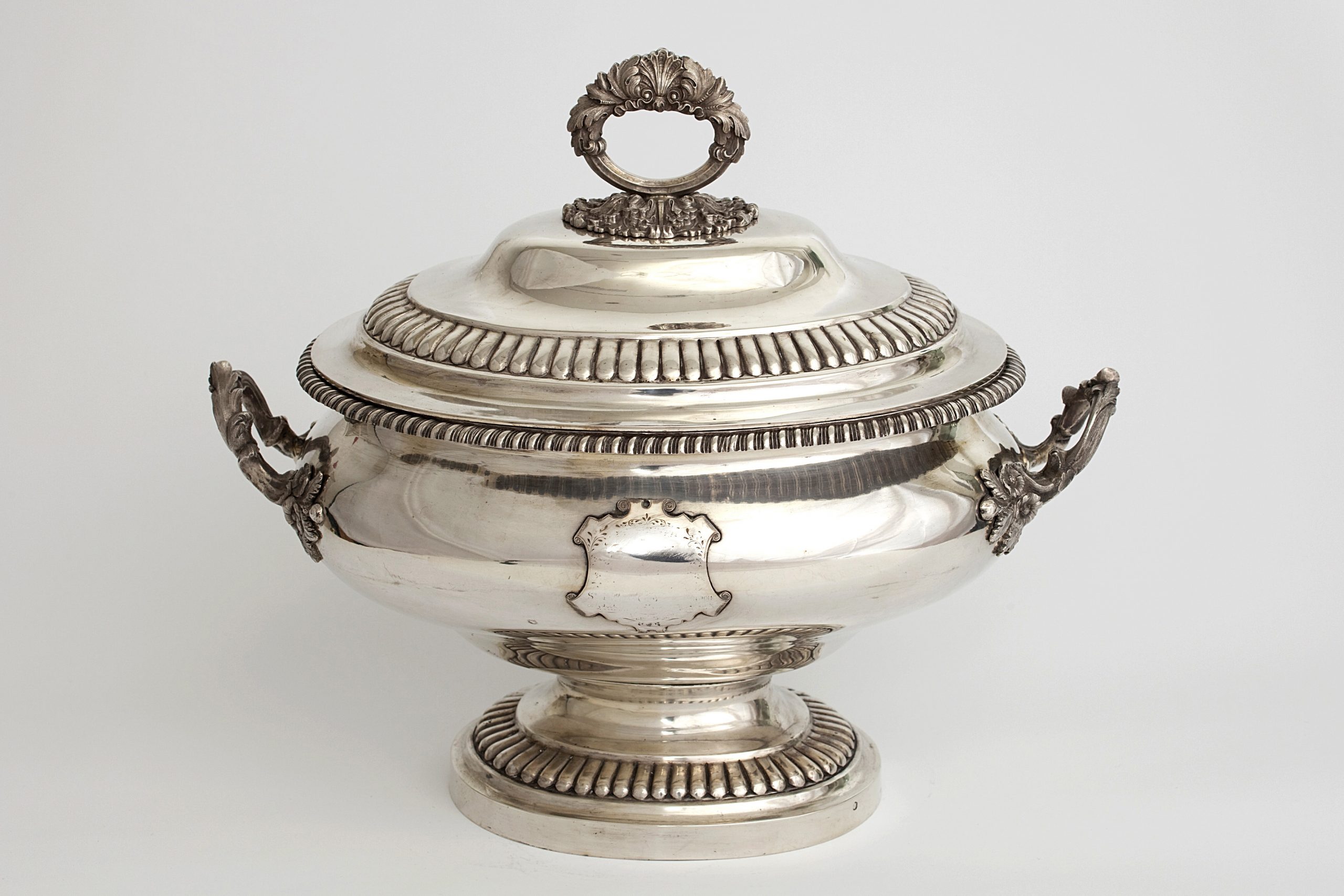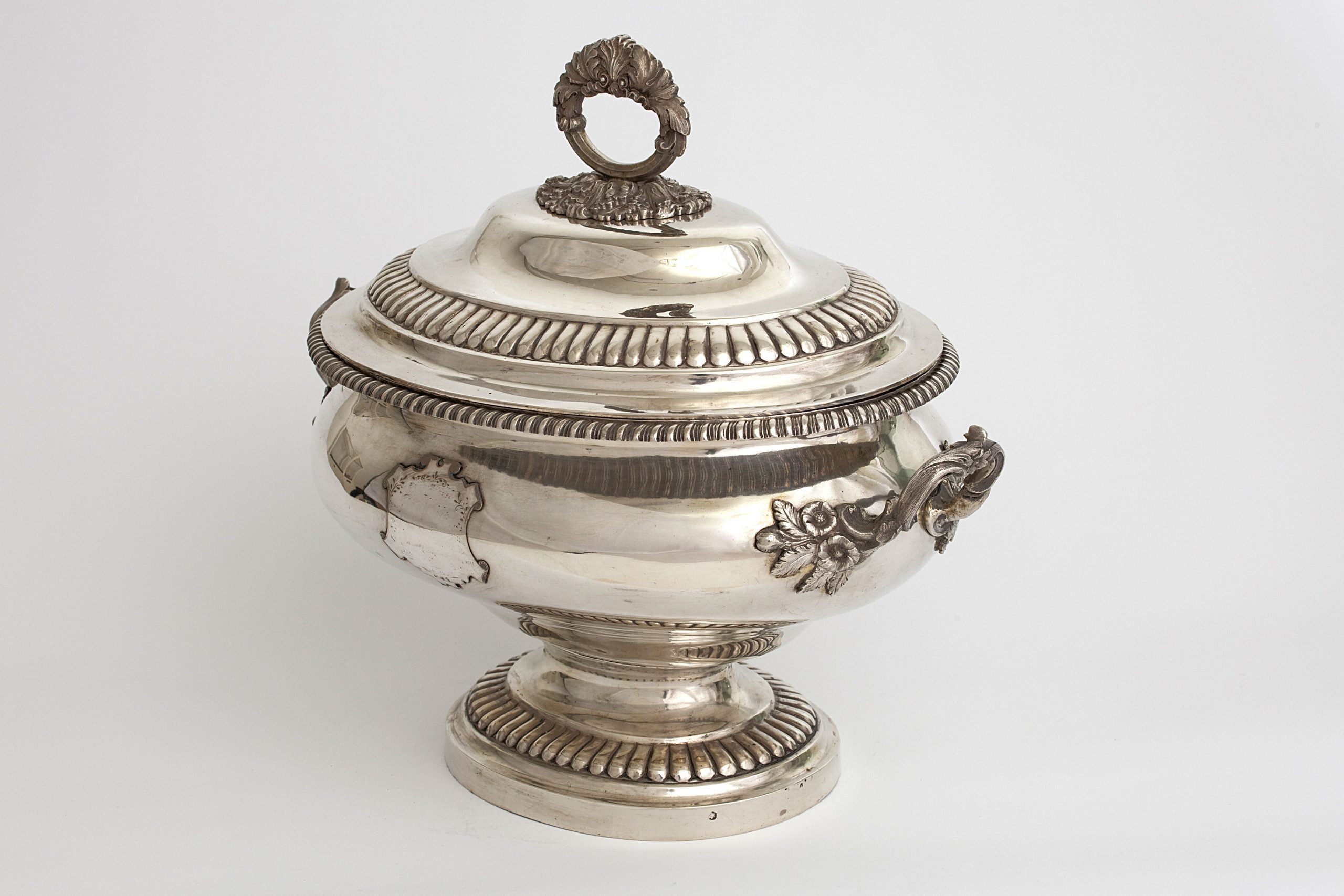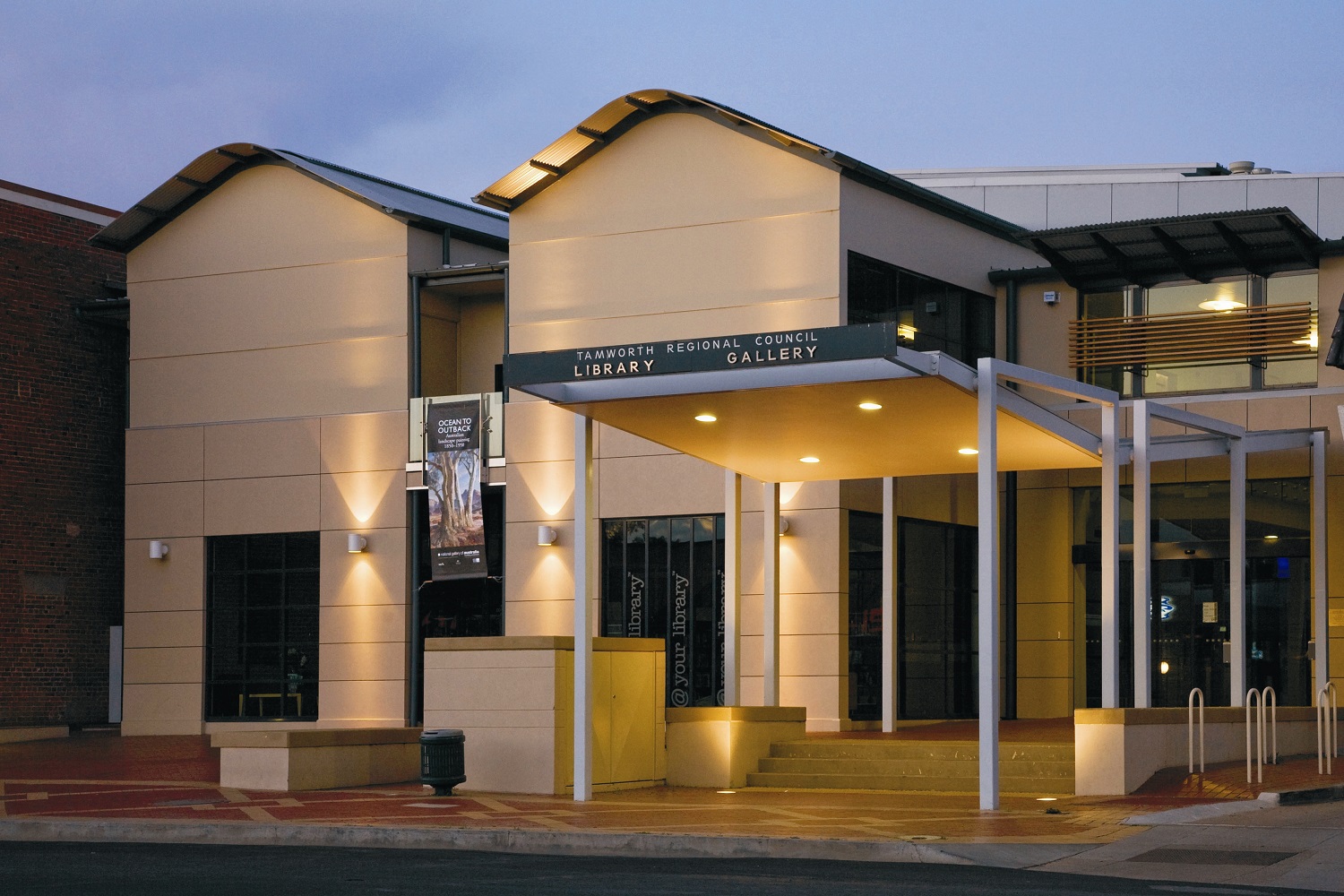Prestigious Dining
The Rococo Style of William Edwards
When it comes to design sensibilities today, I think many would describe this tureen as somewhat gaudy – particularly because any extravagant covered dish for serving soup would be a strange addition to modern dinner tables.
However, this style of decorative art was once considered the height of refinement. Emerging from the salons of early eighteenth-century French aristocracy, ‘Rococo’ style reveled in elaborate and elegant designs reserved for the wealthy.
The embellishments on this tureen are all decidedly rococo. Intricate floral handles, unfurled scrolls also known as ‘cartouches,’ and ‘gadrooning’ – the repeated petal-like shapes on the base and cover – all speak to the sense of luxury the style aimed to express.
William Edwards (1819-1899), the British silversmith who made this tureen, learned his craft as a revival of Rococo design swept through Europe (particularly England) a century later. After immigrating to Melbourne in 1857, this style would gain popularity as the silver industry in Australia grew.
At the time, this style of silverware appealed to the taste of European settlers, many of whom aspired to wealth or prestige. But as the cultural identity of the settlements began to diverge from Europe, formal traditions like the silver tureen began to fall out of favour and into obscurity.


